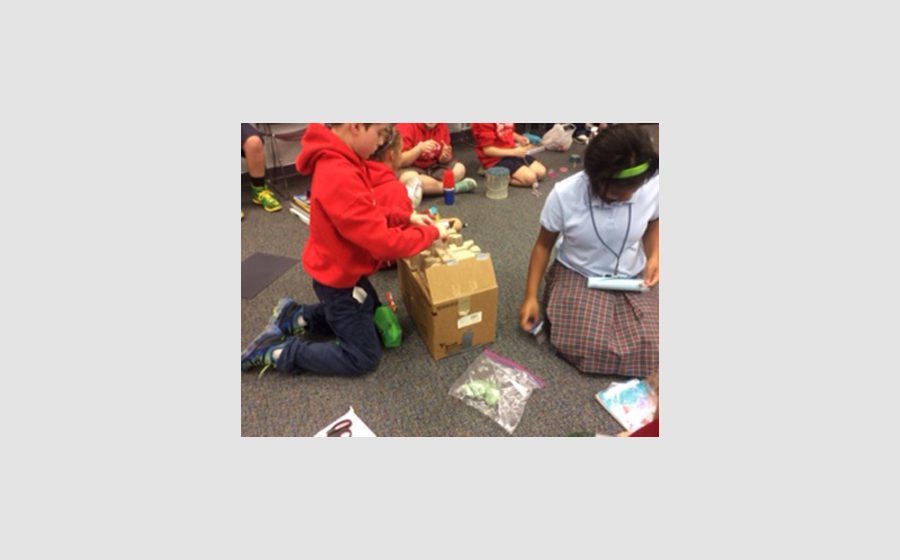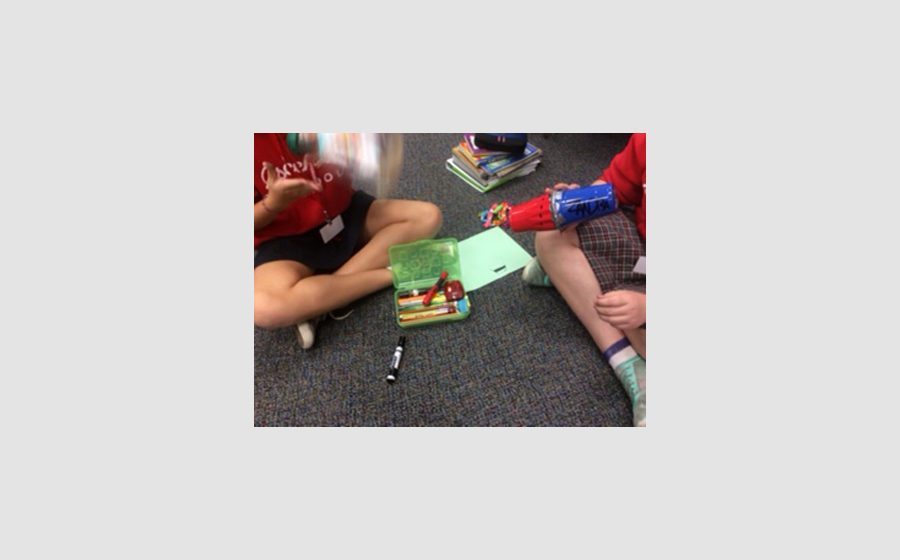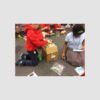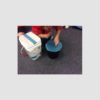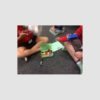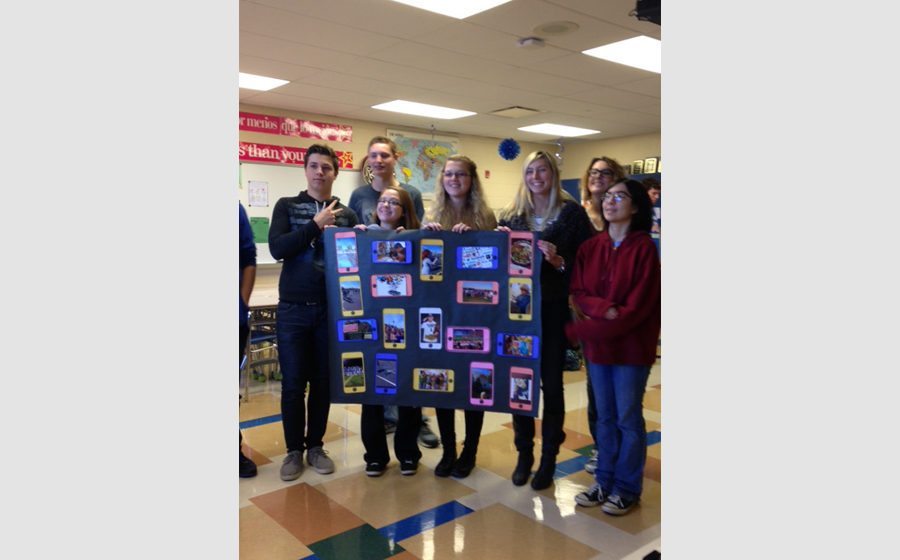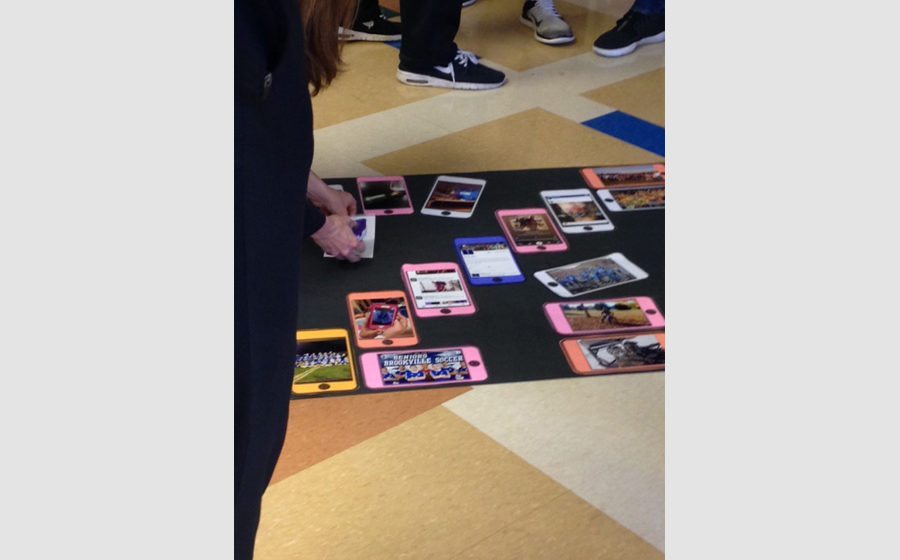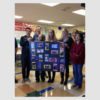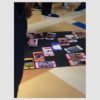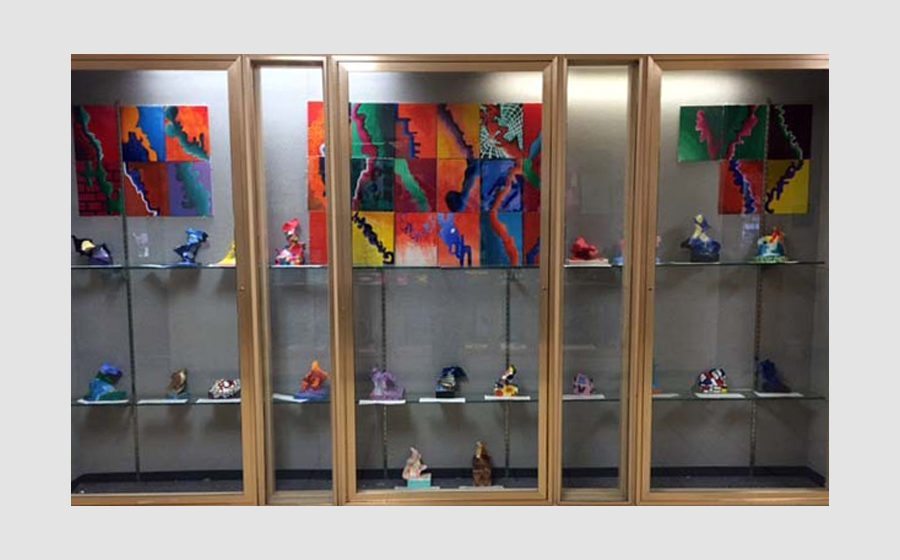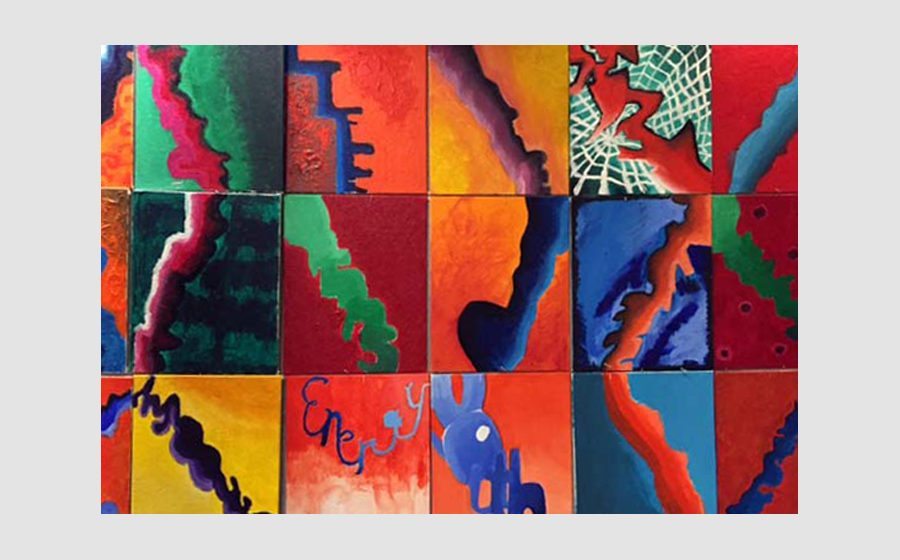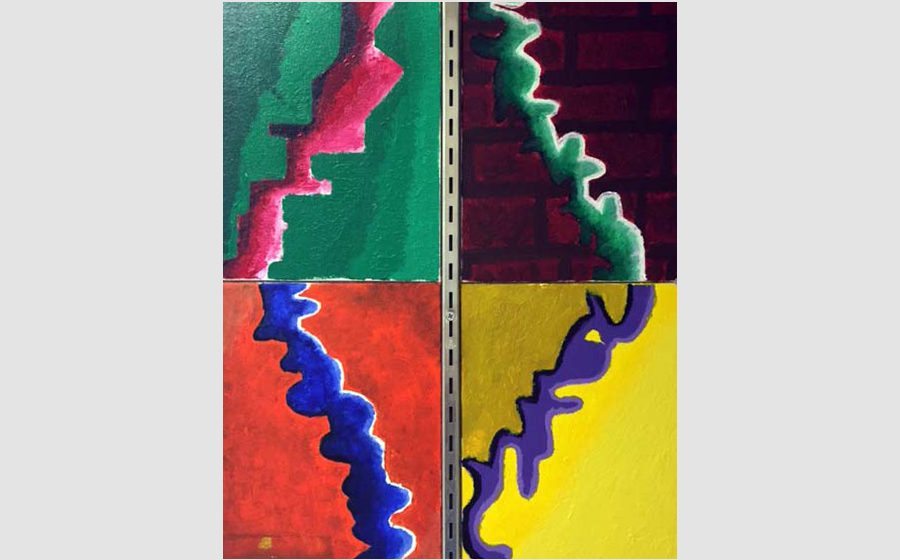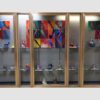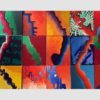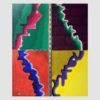Song titles appear in italic type. Required cast appears in (parenthesis).
“TV Cast” are the teenage singers/dancers on the Corny Collins Show, including Link and Amber.
“Baltimore Kids” are primarily younger members of the cast who specifically had the term “Baltimore Kids” on their casting letters.
We will be “dark”–meaning no rehearsal–on most Fridays. This means Muse performers have most Friday, Saturday and Sunday nights free!
“Tutti” means entire cast.
“Rehearsal” means complete run-through of the show.
November
TUES, NOV 01
4:30-6:30
AIS7 Welcome To The 60s (Edna, Tracy, Dynamites)
6:30-8:30
Holiday Show rehearsal
WED, NOV 02
4:30-6:30
AIS7 Welcome To The 60s (Edna, Tracy, Dynamites, Mr. Pinky, Mr. Pinky’s staff)
6:30-8:30
Holiday Show rehearsal
THURS, NOV 03
4:30-8:30
AIS6 It Takes Two (Corny, Wilbur, Penny, TV Cast, Tracy, Velma, Spritzer)
FRI, NOV 04
Dark
SAT, NOV 05
10:00-12:00
Welcome To The 60s (Edna, Tracy, Dynamites, Mr. Pinky, Mr. Pinky’s staff)
12:00-1:00
Lunch break
1:00-5:00
AIS7 pages 39-44 Welcome To The 60s (All Welcome To The 60s performers minus Baltimore Kids)
SUN, NOV 06
1:00-2:00
AIS6 pages 36-37 (Corny, Velma, Spritzer)
2:00-3:30
AIS6 page 37 Velma’s Revenge (Velma)
3:30-4:30
AIS7 pages 38-39 (Edna, Tracy)
MON, NOV 07
4:30-6:30
AISP-7 pages 1-44 (Tutti minus Baltimore Kids)
6:30-8:30
You Can’t Stop The Beat Promo Version/Holiday Show
TUES, NOV 08
4:30-8:30
AIS8 pages 45-49 Dodgeball scene (Amber, Shelley, Gym Teacher, Tammy, Link, Fender, Seaweed, Tracy, Duane, Gilbert, Penny, other performers in dodgeball scene aka the gym class)
WED, NOV 09
4:30-8:30
AIS9 pages 52-58 Scene in record shop (Motormouth, Seaweed, Link, Penny, Tracy, Amber, Velma, Edna, Wilbur, Cindy Watkins, Inez, Big Blonde And Beautiful performers)
THURS, NOV 10
4:30-8:30
AIS9 pages 58-62 Big Blonde And Beautiful (Motormouth, Seaweed, Link, Penny, Tracy, Amber, Velma, Edna, Wilbur, Cindy Watkins, Inez, Big Blonde And Beautiful performers, Policemen)
FRI, NOV 11
Dark
SAT, NOV 12
10:00-11:00
AIIS1 pages 69-70 Good Morning Baltimore Reprise (Tracy)
11:00-1:00
AIIS1 pages 63-70 The Big Dollhouse (Matron, Velma, Edna, Amber, Inez, Motormouth, Penny, Tracy, Guard, Wilbur, Big Dollhouse performers)
1:00-2:00
Lunch break
2:00-5:00
AIIS1 continued (see above)
SUN, NOV 13
1:00-3:00
Holiday Show rehearsal
3:00-4:00
I Know Where I’ve Been (Motormouth, Tracy, Link, Penny, Seaweed, Inez, Gilbert, Duane, Lorraine, Cindy Watkins, I Know Where I’ve Been performers)
4:00-5:00
Without Love (Tracy, Link, Seaweed, Penny, Wihtout Love performers)
MON, NOV 14
4:30-6:00
AIIS8 Scene following dodgeball (Tracy, Link, Seaweed, Penny)
6:00-7:30
Scene work (Tracy)
TUES, NOV 15
4:30-6:30
AIIS3 pages 76-82 Without Love (Tracy, Link, Seaweed, Penny, Prudy)
6:30-8:30
Wihtout Love continued (Tracy, Link, Seaweed, Penny, Wihtout Love performers)
WED, NOV 16
4:30-8:30
I Know Where I’ve Been (Motormouth, Tracy, Link, Penny, Seaweed, Inez, Gilbert, Duane, Lorraine, Cindy Watkins, I Know Where I’ve Been performers)
THURS, NOV 17
4:30-6:30
AIIS5 pages 88-89 It’s Hairspray (Corny, TV Cast)
6:30-8:30
AIIS5 pages 91-92 Cooties (Amber + the following actors: Aydrianne H, Ben S, Cameron C, Caroline E, Jo B, Max W, Rebecca H, Summer S, Tommy C, Tyler H)
FRI, NOV 18
4:30-6:00
Baltimore Kids
SAT, NOV 19
10:00-12:30
AIIS5 pages 93-95 You Can’t Stop The Beat Part 1 (Corny, Tracy, Penny, TV Cast, Seaweed, You Can’t Stop The Beat Part 1 performers)
12:30-2:00
AIIS5 pages 98-100 You Can’t Stop The Beat Part 2 (Corny, Tracy, Penny, TV Cast, Seaweed, Edna, Motormouth, Velma, You Can’t Stop The Beat Part 2 performers)
2:00-3:00
Lunch break
3:00-4:30
Greene Event rehearsal
4:30
Travel to Greene
5:45-6:30
Perform at Greene
SUN, NOV 20
1:00-3:00
AIIS5 pages 93-95 You Can’t Stop The Beat Part 1 (Corny, Tracy, Penny, TV Cast, Seaweed, You Can’t Stop The Beat Part 1 performers)
3:00-5:00
AIIS5 pages 98-100 You Can’t Stop The Beat Part 2 (Corny, Tracy, Penny, TV Cast, Seaweed, Edna, Motormouth, Velma, You Can’t Stop The Beat Part 2 performers)
MON, NOV 21
4:30-8:30
AIIS5 pages 90-93 Scene after It’s Hairspray, Cooties and Scene after Cooties (Velma, Wilbur, Motormouth, Corny, TV Cast, Spritzer, Tracy)
TUES, NOV 22
4:30-8:30
Act Two (Tutti minus Baltimore Kid)
WED, NOV 23
Thanksgiving Break
THURS, NOV 24
Happy Thanksgiving!
Thanksgiving Break
FRI, NOV 25
Thanksgiving Break
Happy Birthday, Joe Deer! (Nov 25)
SAT, NOV 26
Thanksgiving Break
SUN, NOV 27
Thanksgiving Break
MON, NOV 28
4:30-8:30
Includes the following songs: Good Morning Baltimore, The Nicest Kids In Town, Mama I’m A Big Girl Now, I Can Hear The Bells, Miss Baltimore Crabs, The Madison, The Nicest Kids In Town Reprise, It Take Two, (All perofrmers from those scenes and songs; Baltimore Kids 4:30-5:30)
TUES, NOV 29
4:30-8:30
AIS7-9 pages 38-62 Includes the following songs: Welcome To The 60s, Run And Tell That, Big Blonde And Beautiful (All perofrmers from those scenes and songs minus Baltimore Kids)
WED, NOV 30
4:30-6:00
Group vocal rehearsal (Tutti minus Baltimore Kids)
6:00-8:30
Group dance rehearsal (Tutti minus Baltimore Kids)
December
THURS, DEC 1
4:30-8:30
AIIS1-3 pages 63-82 Includes the following songs: The Big Dollhouse, Timeless To Me, Without Love (All perofrmers from those scenes and songs minus Baltimore Kids)
FRI, DEC 2
Dark
SAT, DEC 3
10:00-1:00
AIIS4,5 pages 83-100 Includes the following songs: I Know Where I’ve Been, It’s Hairpsray, Cooties, You Can’t Stop The Beat Parts 1 & 2 (All perofrmers from those scenes and songs minus Baltimore Kids)
1:00-2:00
Lunch break
2:00-5:00
Selected scenes and songs (Tutti minus Baltimore Kids)
SUN, DEC 4
1:00-2:00
Rehearsal for Holiday Show
2:00-5:00
Rehearsal for Arts Cafe
MON, DEC 5
4:30-8:30
Act One (Tutti minus Baltimore Kids)
TUES, DEC 6
4:30-8:30
Act Two (Tutti minus Baltimore Kids)
* The Mid Day Arts Cafe featuring selected cast and creative staff from Hairspray is this afternoon. Look for more info on musemachine.com.
WED, DEC 7
4:30-7:00
Act One (Tutti minus Baltimore Kids)
Hairspray Live! airs on NBC at 8pm – it is every production member’s homework to watch!
THURS, DEC 8
4:30-8:30
Act Two (Tutti minus Baltimore Kids)
6:00-7:30
Holiday Show (Repeat performance of show from Greene Tree Lighting event for a private audience at the Schuster Center. We will resume Hairspray rehearsal following this brief event.)
FRI, DEC 9
4:30-5:30
Baltimore Kids
4:30-6:30
Any cast member (not a Baltimore Kid) who has not yet learned choreography for “You Can’t Stop The Beat”
* To be clear: any cast member who is not a Baltimore Kid who has not yet learned choreography for “You Can’t Stop The Beat” will join us from 4:30-6:30. In addition, the Baltimore Kids will join us from 4:30-5:30 for the first hour of that same session.
SAT, DEC 10
10:00-1:00
Rehearsal (Tutti minus Baltimore Kids)
1:00-2:00
Lunch break
2:00-5:00
Press photos (All cast members, orchestra and PAs) – THIS TIME HAS MOVED TO BETTER ACCOMMODATE MORE STUDENTS.
Rehearsal (Tutti minus Baltimore Kids)
SUN, DEC 11
1:00-5:00
Rehearsal (Tutti; Baltimore Kids 1:00-2:00)
MON, DEC 12
4:30-8:30
Act One (focus on understudies)(Tutti minus Baltimore Kids)
TUES, DEC 13
4:30-8:30
Act Two (focus on understudies)(Tutti minus Baltimore Kids)
WED, DEC 14
4:30-8:30
Dance and vocal rehearsal (Tutti minus Baltimore Kids)
THURS, DEC 15
4:30-8:30
Rehearsal (Tutti minus Baltimore Kids)
FRI, DEC 16
Dark
SAT, DEC 17
10:00-5:00
Rehearsal (Tutti; Baltimore Kids 10:00-11:00)
SUN, DEC 18
11:00-2:00
Rehearsal (focus on understudies)(Tutti minus Baltimore Kids)
*The Winter Dance is this evening. Watch for more info on musemachine.com!
MON, DEC 19
4:30-8:30
Rehearsal/Sitzprobe
*The “Sitzprobe” is an in-concert version of the show with the orchestra.
DEC 20—Jan 2
Winter Break
Happy Hanukkah!
Merry Christmas!
Happy Kwanza!
Happy New Year!
January
TUES, JAN 03
4:30-9:00
Rehearsal (focus on understudies) (Tutti minus Baltimore Kids)
WED, JAN 04
4:30-5:30
Notes for Understudy Performance (Tutti minus Baltimore Kids)
5:30-8:30
Understudy Perofrmance
*This is the tentative Understudy Performance. Families of the understudy cast are invited to attend. Non-flash photos are welcomed; NO video. Entire cast must attend.
THURS, JAN 05
5:00-10:00
Rehearsal: primarily Act One spacing (Tutti; Baltimore Kids 5:00-8:00)
*From this date forth, all rehearsal are held at the Victoria Theatre except January 09.
FRI, JAN 06
5:00-10:00
Rehearsal: primarily Act Two spacing (Tutti minus Baltimore Kids)
SAT, JAN 07
10:00-10:00
Tech Rehearsal (Act One X2) with costumes and make-up (Tutti)
*Dinner provided between rehearsal.
SUN, JAN 08
10:00-10:00
Tech Rehearsal (Act Two X2) with costumes and make-up (Tutti minus Baltimore Kids)
*Dinner provided between rehearsal.
MON, JAN 09
4:30-8:30
Rehearsal (Tutti minus Baltimore Kids)
*This rehearsal is in the Muse Studio.
TUES, JAN 10
5:00-10:00
Rehearsal with tech, costumes and make-up (Tutti)
*All remaining rehearsals and performances are in the Victoria Theatre; Tutti!
WED, JAN 11
5:00-10:00
Rehearsal with tech, costumes and make-up (Tutti)
THURS, JAN 12
Performance: Opening Night
6:00: Call
7:00: Curtain
10:00: End
FRI, JAN 13
Performance
7:00: Call
8:00: Curtain
11:00: End
SAT, JAN 14
Performances
2:00: Call
3:00: Curtain
*Dinner provided between performances
7:00: Call
8:00: Curtain
11:00: End
SUN, JAN 15
Performance
1:00: Call
2:00: Curtain
5:00: End





























